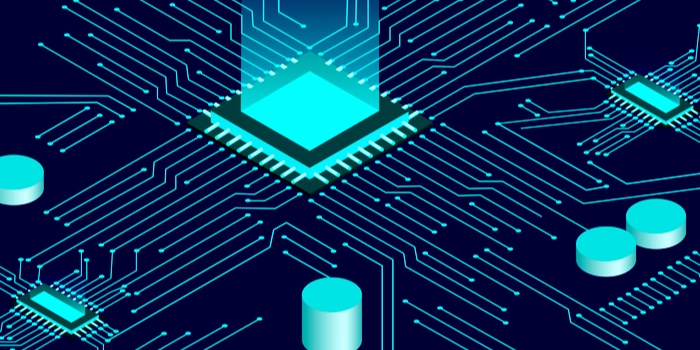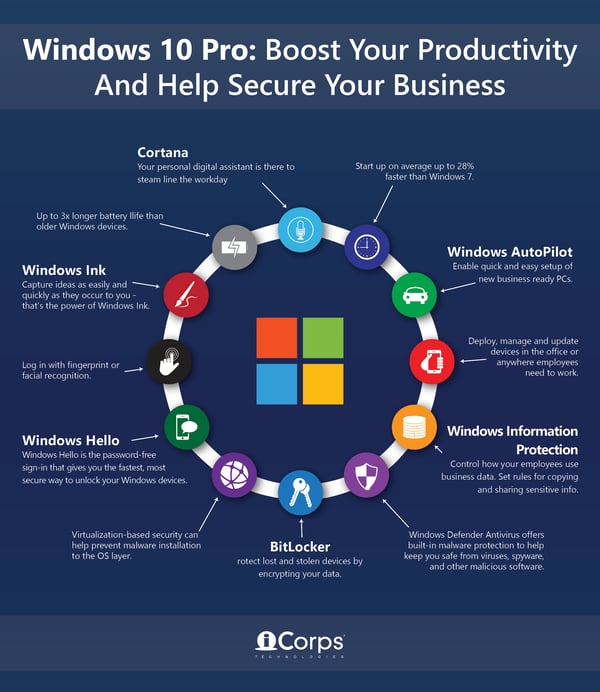Some deadlines are more forgiving than others. Case in point: 47% of SMBs are still running Windows 7, even though the operating system reached official end-of-life on January 14th. Microsoft will no longer provide free patches for security vulnerabilities and system bugs, in the hope that users will migrate to the far superior Windows 10. Unless your company is ready to pay through the nose for Windows 7 "Extended Security Updates" (more on that later), it's time to make the OS switch.
Here's why the move to Windows 10 is so important, and how to pull off a seamless migration:
Don't Be The Next FedEx, Don't Get Hacked
The bulk of Windows 7 support (including feature updates and valid hardware warranties) actually ended in 2015. Microsoft has since entered a tenuous "extended support" period, continuing to provide patches. Despite encouragement to adopt Windows 10, many companies were - and still are - reluctant to make the switch. There are generally two rationales: Windows 7's continued functionality, and the sunk cost fallacy. Users will not experience significant changes to their daily operations, even though Windows 7 has reached end-of-life. Many mistake this operability for system health. That is if you'll pardon the understatement, a very bad idea. But the metaphor doesn't have to do the heavy lifting here - history is more than capable.
In 2017, the Russian state-sponsored hacking group Shadow Brokers (yes, really), leaked a tool designed by the NSA called EternalBlue. This backdoor allowed users to exploit a vulnerability in Windows XP and Server 2003's messaging block. Initially, hackers used EternalBlue to run cryptominers on infected devices, or scrape sensitive data from wi-fi networks. But opportunity rewards ambition. On the 12th of May, North Korean cybercriminals used EternalBlue to launch WannaCry - a ransomware cryptoworm that spread to 150 countries, infected hundreds of thousands of machines and racked up billions in damages. Major corporations including Nissan, FedEx, and the U.K.'s National Health System were crippled by WannaCry. Do you know what could have prevented this? Upgrading operating systems.
Don't Get Stuck In The Extended Security Update Trap
Sustaining a single operating system requires a tremendous amount of energy and 24/7 upkeep. As Microsoft allocates more resources to Windows 10, cybercriminals are going to take notice. Legacy operating systems draw unnecessary attention to your organization, and often void warranties that come with newer hardware. To compromise, Microsoft is offering Extended Security Updates - for companies running Windows 7 that want to continue receiving security patches. The ESUs will continue through January 2023, and cost $62 per machine. Each year, the price doubles to encourage Windows 10 adoption. Unless your company's running thousands of Windows 7 machines and has a long migration roadmap, it doesn't make sense to sink any more money into an old OS. ESUs and upgrades to Windows 8 are patchwork solutions, ultimately undercutting the next-gen experience Windows 10 has to offer.
Make The Switch And Increase Productivity With Windows 10
Windows 10 is projected to reach one billion devices this year - and for good reason. It's the OS for a modern workforce, with faster-operating speeds, a more responsive and personable user interface, and greater application compatibility. The Windows store leverages application sandboxing - meaning that applications are run separately - to mitigate the chance of failure and prevent vulnerabilities from spreading. Other security features include Microsoft Passport (a single-sign-on and mobile wallet feature), ransomware protection, and threat detection.
Security aside, Windows 10 makes it easier for employees to work on the go. OneDrive provides access to cloud-based files without draining local storage. The OS supports multiple virtual desktops, ideal for employees with limited desktop space, or those looking to streamline operations. Virtual assistant Cortana tracks user interest and curates content, from traffic updates to industry news, while the Action Center keeps employees in the loop about system updates and app notifications.
If you're looking to upgrade from an earlier version of Windows, our experts can help. A well-planned migration minimizes downtime and ensures your line-of-business applications are compatible with a new OS. For more information about planning your Windows 10 migration, reach out to iCorps for a free business IT consultation.






